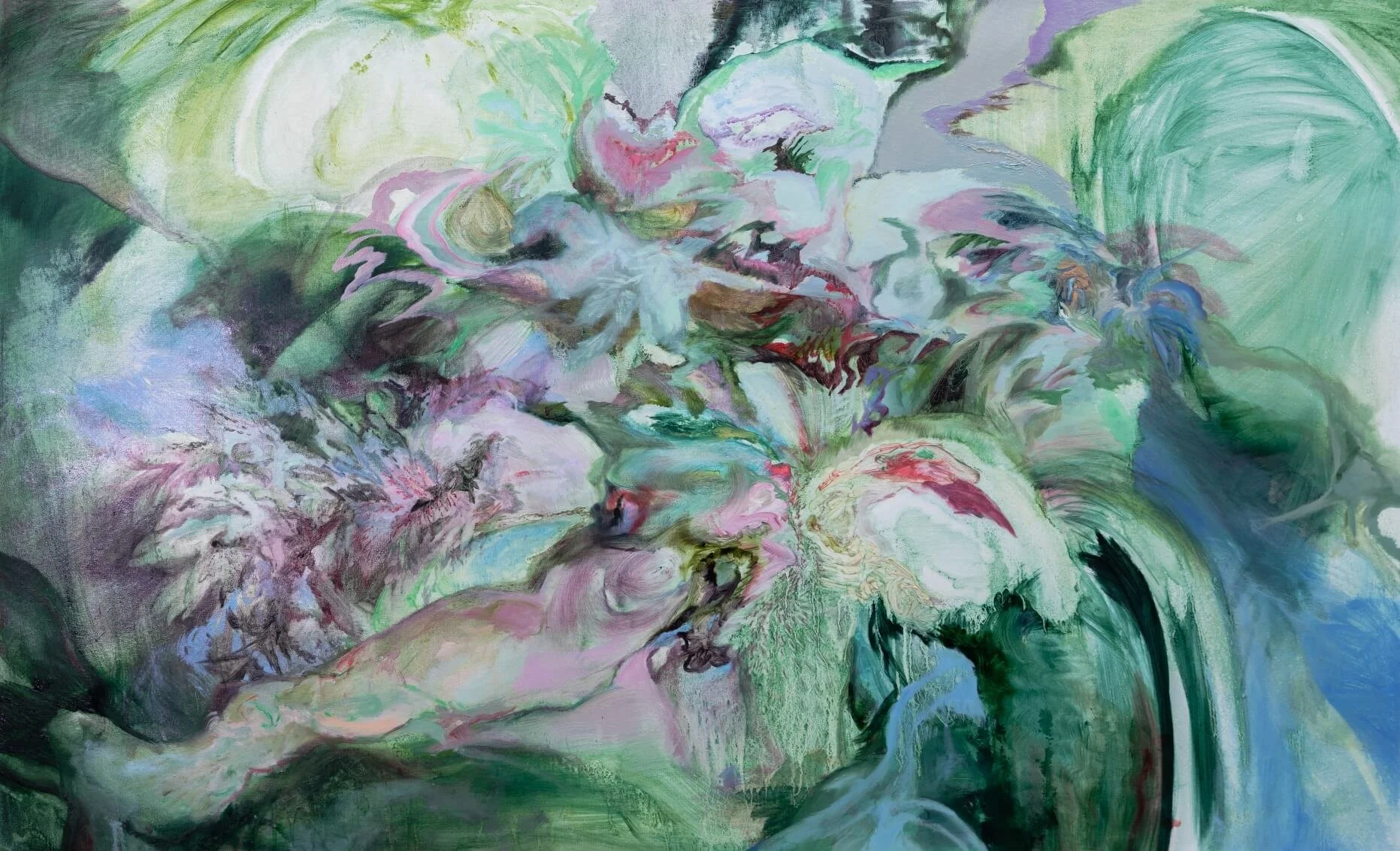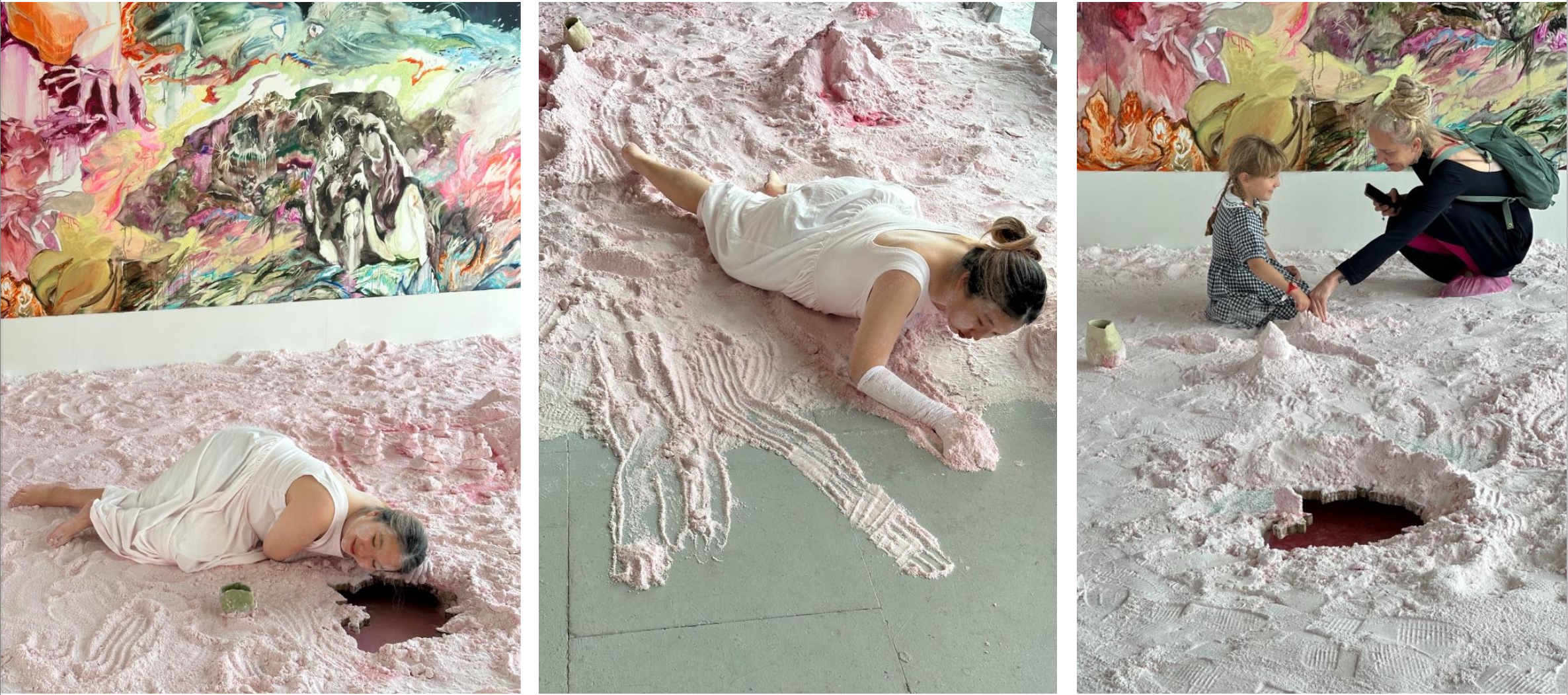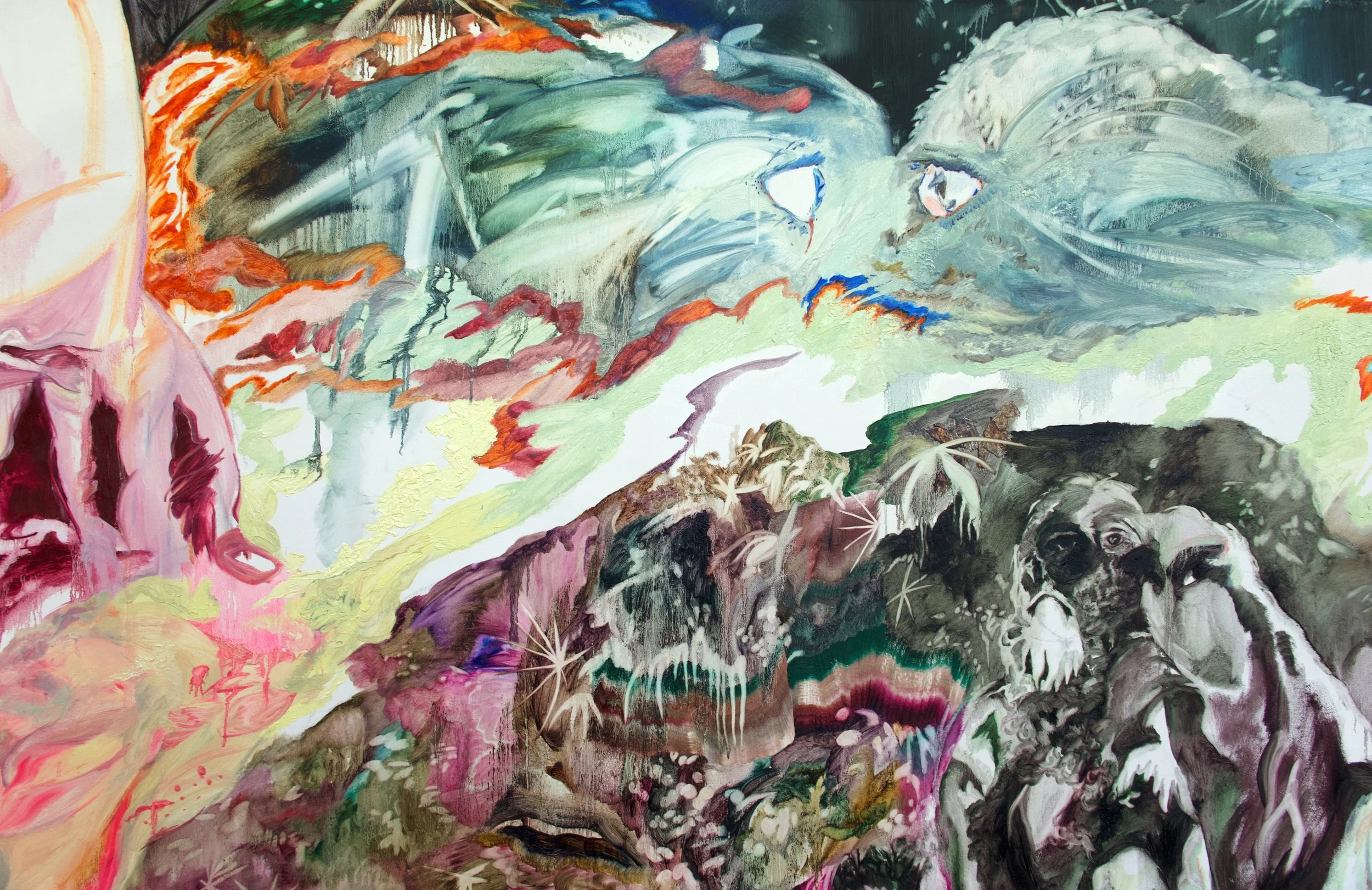SOO HYUN LEE
SOO HYUN LEE
A CONVERSATION WITH SOO HYUN LEE
TEXT BY ANA ESCOTO
Soo Hyun Lee doesn’t just create art—she builds worlds, reclaims space, and confronts uncomfortable truths about identity, race, gender, and power. Her work speaks to the politics of resistance, drawing deeply from her personal history and the lived experiences of being a woman in a world that often doesn’t take us seriously. From Daphne to My soft hands became a sword one day, Soo’s art is not just aesthetically beautiful—it is a profound challenge to societal norms and historical injustices.
Her works feature bodies that are constantly in flux, never static, always resisting the constraints placed upon them. Whether through painting, performance, or sculpture, Soo Hyun Lee’s art confronts not just the body but also the political landscape that shapes how we understand identity, survival, and the way we inhabit the world.
We sat down with Soo Hyun Lee to discuss her creative process, the political resonance of her work, and how she uses materials, scale, and form to interrogate the intersections of identity, race, and power.
Installation shot of I have seen this coming, pigment and oil on canvas 2024. Image courtesy of Akku Kuntsplattform.
How do your compositions reflect the personal stories you want to tell?
I think my work starts with a quiet rebellion, a way of reimagining the spaces I’m told to accept. It begins with the body—always. But this body is never passive; it’s shifting, transforming. That’s how I see it, and that’s how I want to present it in my work.
Take Daphne, for example. The body in that series is fragmented, morphed. But it’s not about showing trauma literally—it’s about transformation as a metaphor. Transformation is key. I chose the myth of Daphne because she escapes violation by transforming into a tree. It’s a survival story, and that’s a story that resonates with me personally. The trauma is there, but what I really wanted to focus on is the strength that comes from survival.
Soo Hyun Lee, Daphne, oil on canvas, 2021. Image courtesy of the artist.
I’ve always used my work to give voice to things I can’t speak about directly. In I have seen this coming, I wanted to explore how care operates, especially for women. The way care is both a form of love and a kind of emotional labor that women bear more heavily than anyone else. So the bodies in that series aren’t static. They are in motion—suspended in spaces, floating in tension, but the figures aren’t simply weak. They are dynamic and defiant, even when they’re nurturing.
My soft hands became a sword one day came from a very different place, though. That was about anger. My soft hands, my body, have always been sexualized. I wanted to turn that ‘softness’ on its head. I wanted to confront this idea that as an Asian woman, my body is seen as passive. In this series, I show the soft hand as a weapon, as a sword, as a way to resist.
“This body—the ‘soft’ body—is not submissive. It’s a refusal to submit, to stay quiet. I’m tired of being seen as harmless, as something to be fetishized. My work is about reclaiming my space and my voice. The title I wish my elbows had thick thorns to rip through his confident chest is just one example of how I’m confronting that narrative. The arm in the painting becomes a blade, not to inflict harm, but to say no, to resist. My work is a direct confrontation with how I’m seen and how I’m expected to behave. It’s a challenge to a system that keeps saying, ‘You should be quiet.’ But I refuse.
Soo Hyun Lee, My soft hands became a sword one day, pencil, watercolour and Japanese pigment on paper; pencil on wood, 2025. Image courtesy of Akku Kuntsplattform.
What is the purpose of traversing different formats in terms of size and material? How does this come into fruition?
I think materials always find me. I’m never sure at the start how a piece is going to look. It’s about an instinctual process. I let the work lead me. I don’t go into the studio with a set plan. Sometimes, an image or feeling just keeps coming back to me, and I begin to work from there.
For example, the materiality in I have seen this coming was chosen because I wanted to explore fragility—how soft materials can be a source of power. I began thinking about care as a fragile thing. It’s often something women give without hesitation, and often without recognition. But what if fragility could also mean strength? That’s why I used soft materials in this series—soft powder, delicate surfaces—but when mixed together, they transform. They change into something more solid, something resilient. And that’s how I see care—it builds, it swells, and it becomes something powerful.
Soo Hyun Lee, I have seen this coming, 975kg handmade powder, pond, and oil , 2024. Image courtesy of the artist.
When I was working on My soft hands became a sword one day, I was thinking a lot about how softness is weaponized. Softness isn’t weakness. It’s a form of resistance. A lot of my paintings have this rough, dense texture to them. I use materials in a way that reflects this idea that softness can be strong, that fragility can be resilient.
For me, it’s not about trying to be subtle or gentle. It’s about using the space I’m given to make the work bigger, to allow it to speak louder. I think a lot about scale and the presence that the work holds in a room. It needs to occupy that space fully. The figures in my work are always larger than life—because they are larger than the expectations society places on them.
Installation shot of I have seen this coming, pigment and oil on canvas 2024. Image courtesy of Akku Kuntsplattform.
Is there anything that colours your practice that you would like to share?
Definitely. One of the most significant moments for me was during my BA degree show. A friend asked me: What is the biggest emotional motivation behind your art? And I answered without thinking—love. Not just romantic love, but a love for the world, a love for the beings and values I care about. That was a revelation for me. Love, in all its forms—especially its complexities—has always been the core of my work.
Whenever I feel emotionally overwhelmed, my first impulse is to create. Art becomes a way to process those feelings, to channel them into something that can then be shared. But it’s also a form of survival for me. I don’t think I would survive without it.
The emotional conflicts in my work come from that place—when I feel powerless, vulnerable, and yet continue to push through. That’s the story I want to tell. How do we survive when everything is working against us? And more importantly, how do we reclaim our own strength in that process?
“How do we survive when everything is working against us?
how do we reclaim our own strength in that process?”
Soo Hyun Lee, Holding on to the Collapsing, pencil on paper, 2023. Image courtesy of the artist.
What is your relationship with painting on a personal level? What does it mean to you?
Painting, to me, is about resurrection. Before I begin a new piece, I usually spend a lot of time reflecting, lying in bed, thinking. It’s not glamorous at all, but it’s necessary. I let my thoughts simmer, and that’s when the work begins to form. It’s like giving birth to something that’s always been there but needs to emerge.
“PAINTING, TO ME, IS ABOUT RESURRECTION.”
For me, the process of painting is very emotional. It’s not about making something perfect. It’s about being honest. Even when I’m exhausted emotionally, when I’m at my lowest, painting allows me to rise again. I think that’s why I’m drawn to it so deeply. It’s my way of processing everything that’s happening inside me, and everything that’s happening in the world.
I don’t create to be pretty or to make something aesthetic. I create to express something real—to speak to the parts of ourselves that we often try to ignore. And in that process, I find strength. I find my way forward.
Studio image courtesy of Glimpse Magazine, 2025.
How has your practice evolved, and what are your long-term goals?
My practice has definitely evolved with my personal growth and also with what’s happening politically around me. For example, after the femicide near Gangnam Station and the consequent School #MeToo movement, I started paying closer attention to how fragile things can carry so much weight. These protests—where people used delicate materials, like sticky notes and K-pop girl band songs, to voice their anger—really spoke to me.
The use of soft, fragile materials in those protests made me think about fragility in a new way. What if fragility could be a form of resistance? What if it could be a weapon? And that’s what I’ve been exploring in my work. Materials like powder or fabric can be incredibly delicate, but they can also hold so much power when used with intention.
“What if fragility could be a form of resistance? What if it could be a weapon?”
Looking ahead, I want to keep creating work that speaks to both the personal and the political. I want to continue using my art to challenge the systems that silence us—especially women and people of color. My goal is to keep building these worlds, these spaces where resistance is possible, where survival becomes a form of strength.











